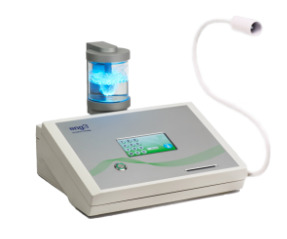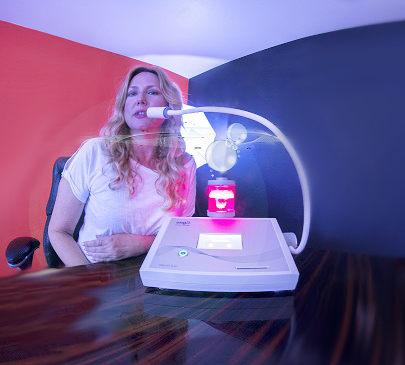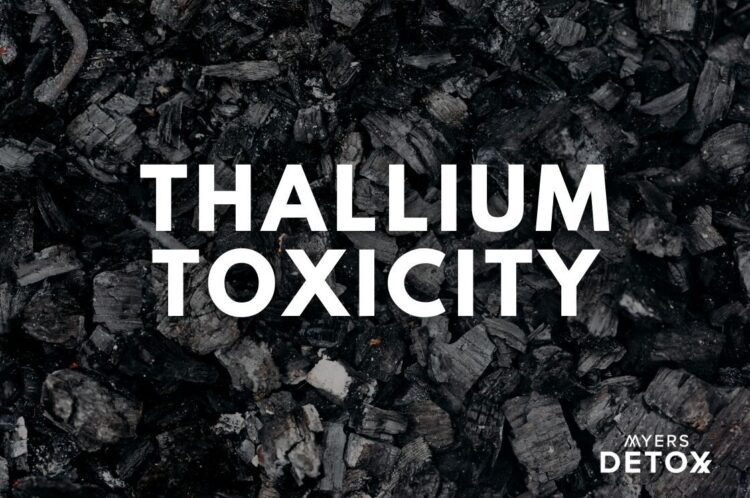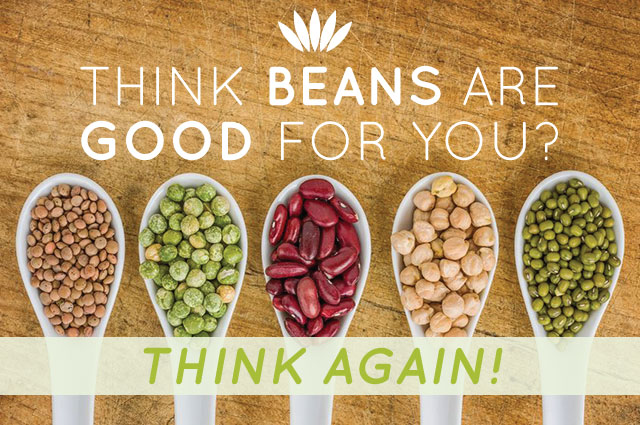How NanoVi Helps with Detox

I want to talk to you about a device called NanoVi ™, which can help support your detox organs at a cellular level. Let me tell you why that is so important.
There’s no denying the damage heavy metals do to your body. Heavy metals create cellular “stress” via negative ROS (Reactive Oxygen Species), promote and even directly cause DNA damage, interfere with mitochondrial (cellular energy) function, and interfere with protein function (or cause “protein misfolding). All this is damaging on a deep cellular level. The good news is that NanoVi technology can help with all 4 sources of cellular damage and support your body as you detox. Let me tell you more…
Detoxing is a hot topic. You’ve probably heard of week-long juice cleanses, herbal tonics, detoxifying superfoods, and other boutique products that are supposed to remove toxins from your body. Any ‘one size fits all’ approach has its limits, which is why I developed the Myers Detox Protocol. My approach accounts for the unique needs of each individual in order to support the body’s own detoxification ability.
Cleansing your body of toxins is an attractive idea, but the vast majority of cleanses and detox diets are more clever marketing than they are good science. You already have an extraordinary system of organs designed to process toxins in your body, and if you’re in good health, you’re probably equipped to handle the damaging compounds daily life throws at you.
However, if you’re exposed to a lot of pollutants – say, from living in a city with low air quality, having mercury amalgam fillings, working with heavy metals or herbicides, or consuming too much of certain foods and drinks – the accumulated toxic load truly can overstress your detox system.
If you’re taking in more pollutants than your body can process, you may need help with detoxification and I find it especially important to support your body’s own detox capability. For this kind of support, I turn to NanoVi. NanoVi supports your existing detox organs at a cellular level, helping them become more efficient and resilient to the oxidative damage they take on from processing pollutants.
Before we get into how NanoVi helps you handle toxins, though, let’s take a quick look at how your detox system works. In this article, you’ll learn:
- How your organs process toxins
- What happens when your detox organs get overwhelmed
- Why protein folding is so important to detoxification
- How NanoVi can help your cells become more resilient to toxins
Let’s get started.
Liver, Kidneys, and Lymph: Your Body’s Detox System
Toxins are everywhere. Fossil fuel byproducts from cars and factories, pesticides in soil, heavy metals in seafood and certain edible plants, pathogenic bacteria, carcinogens from seared meat, alcohol, persistent organic pollutants from beauty products – if you’re living and breathing, you’re taking in toxins every day. Your own cells produce metabolic waste constantly, and your body has to mobilize and get rid of them.
That probably sounds alarming at first, but in most cases, your body’s great at processing and getting rid of pollutants. You have three main detox systems, and they all work together to protect you from toxic load. They are:
– Your liver.Your liver is like a security check for your bloodstream. It pulls out unusual or damaging compounds, transforms them into inactive/less harmful forms, and sends them off for excretion. Your liver is home to enzymes that handle a wide variety of toxins, from alcohol to mercury. Your liver is particularly good at filtering out fat-soluble toxins; it sends them to your digestive tract, and you excrete them alongside food waste.
– Your kidneys. Your kidneys deal with water-soluble toxins. They sift through 25% of your circulating blood every minute, pulling out toxins dissolved in water and sending them to your bladder. You excrete them through urine.
– Your lymphatic system. Your lymphatic system mobilizes metabolic/cellular waste and sends it to your lymph nodes, where lymphocytes destroy the waste or mark it for excretion.
Your liver, kidneys, and lymphatic system are master detoxifiers. They even work together – for example, if your liver can’t deal with a stubborn fat-soluble toxin, it may turn it into a water-soluble form and send it to your kidneys. Your kidneys can then inactivate it and/or send it to your bladder for excretion. It’s a pretty impressive system.
What Happens When Your Detox Organs Get Overwhelmed?
Your detox system is powerful, but when it has more toxins than it can handle – if, for example, you live in a place with very low air quality, or you’ve been eating high-mercury seafood too often – your detox organs can become overwhelmed.
And even when your detox pathway is running well, dealing with toxins has a cost – processing them creates a lot of free radicals, which cause oxidative stress that damages your cells. Over time, that oxidative damage wears away at your organs, and as you age, you become less and less able to deal with the pollutants of daily life [1,2].
That’s where NanoVi comes in. NanoVi supports protein folding, a process that keeps your detox cells running efficiently, even in the face of oxidative stress.
Let’s quickly talk about what protein folding is, and why it’s an essential part of your detox pathway.
Protein Folding for Detoxification
Proteins are the workhorses of your body. They’re the most common molecule in your cells, and they do all kinds of things. Proteins act as enzymes, hormones, antibodies, structural molecules, and more.
Proteins are also some of the larger molecules in your body. They’re these big, sprawling, unstable strings of amino acids, and in order to function, they have to fold into complex (and far more stable) structures.
When free radicals bump up against proteins, they create oxidative damage that makes the proteins unfold. If they can’t fold back up, they can’t function – meaning constant oxidative stress puts a real damper on your cells.
If your liver and kidneys are dealing with lots of toxins, they’re also exposing themselves to a lot of oxidative stress. They produce tons of free radicals, which can cause liver and kidney proteins to unfold. That’s bad news, because your liver and kidneys rely on protein folding to detox properly. Here are a couple examples:
-
- Kidney-filtering proteins.Your kidneys are constantly filtering out toxins and waste products. Over time, things get caught in the filter, and they’ll start to build up, making the filter less effective – just like with the Brita in your fridge at home. Special proteins are responsible for removing built-up junk and keeping your kidneys filtering well; when the key proteins stop working (for example, under increased oxidative stress from toxin overload), your kidneys stop functioning at their best, which can lead to damage and disease [3,4].
-
- CYP450 Enzymes. Your liver’s main detoxifying enzymes – called CYP450 enzymes – are proteins that break down environmental toxins, carcinogens, and most drugs. When they process toxins, they release large amounts of reactive oxygen species (ROS) [5]. If your liver enzymes have to deal with too many toxins, they produce a huge amount of ROS, and they can become overwhelmed, unfold, and stop working efficiently.
-
- Unfolded protein response. When unfolded proteins build up in a cell, they trigger a repair process called the unfolded protein response (UPR). Basically, your cells stop doing their normal job and focus their energy on restoring proper protein folding, because they know the cell will fall apart without it. Normally, UPR is great. It recovers protein function to your cells and makes them more efficient. But if too many unfolded proteins accumulate and UPR can’t keep up, it will tell your cells to destroy themselves (a process called apoptosis) to protect you from further damage. Excess oxidative stress – caused, for example, by trying to deal with a lot of toxins – can unfold too many proteins and trigger too much cell death through UPR, contributing to liver damage and disease [6].
As you can see, your detox pathway relies pretty heavily on proteins to run properly. If accumulated or excessive toxins start creating tons of oxidative stress and those detox proteins unfold, your liver and kidneys can get damaged. In other words, a vicious cycle starts: the more toxins you have to deal with, the less efficient your liver and kidneys become at processing those toxins. That’s where NanoVi comes in.
NanoVi Supports Protein Folding and Helps Your Cells Deal with Toxins
When your proteins are unfolded, they need energy to snap them back into a folded, functional state [7]. Proteins borrow that energy from the water that surrounds them.
Imagine dropping a rock into a pond. The ripples travel throughout the entire lake. That’s because water molecules absorb the kinetic energy of the rock and pass the energy from one molecule to another. If you drop a rock into the water right in front of you, the water all the way on the other shore will feel that ripple eventually.
The same concept applies to your body. Your proteins are floating around in water; when they’re unfolded, they get the energy to fold from a very specific ripple that travels through water. Here’s how it happens:
- Proteins bond to the water that surrounds them, which lets them borrow energy from it [8]. When water absorbs a specific type of electromagnetic energy, the water molecules become ordered in such a way that they can conduct that energy all the way to your proteins – much like a ripple in a pond [9].
- Water that absorbs electromagnetic energy and changes its structure is called ordered water. It can, bit by bit, deliver that energy to proteins, until eventually, an unfolded protein gets enough energy snap back into a folded state and start functioning again [10].
- Your cells produce that valuable electromagnetic energy during oxygen metabolism. As a result, you’re constantly creating ordered water in your cells, which repairs your proteins and helps them refold [10, 11].
So you have a steady supply of ordered water delivering energy to your proteins and keeping them in reasonably good shape. But you’re also constantly producing free radicals – another byproduct of oxygen metabolism – and they’re chipping away at your proteins, making them unfold.
If your liver and kidneys are dealing with a lot of toxins, they’re producing a lot more free radicals than usual, and the balancing act falls heavily in favor of oxidative stress. Your proteins can’t keep up, even with the help of ordered water, and your cells begin to lose function.
NanoVi Provides Ordered Water to Make Your Cells More Resilient
The more ordered water you have around your detox proteins, the more resilient to stress they become, and the more they can process toxins without losing function. By creating that ordered water, NanoVi can help support your detox organs. Here’s a step-by-step breakdown of how it happens:
- Inside the NanoVi, an excitation unit creates the exact electromagnetic signal that your proteins need to refold.
- The NanoVi also produces water vapor and sends it through that electromagnetic signal. The water vapor absorbs the signal, forming ordered water on the surface of the water droplets. The ordered water vapor travels through a tube and leaves the NanoVi as mist.
- You breathe in the ordered water droplets in the mist. When the ordered water droplets hit your nose, they transfer energy to the water molecules in your mucous membranes, and they also become ordered. This energetic, ordered water state transfers, molecule by molecule, throughout the water in your body [10,12].
- As the energy travels from water molecule to water molecule like a ripple in a pond [10], it eventually hits your proteins (including your detox proteins), passes off its energy, and gives them the power to snap back into a folded state [13].
- When your detox proteins have the energy to continuously fold, your detox system can function better and faster, dealing with more toxins in a shorter time.
How to Use NanoVi for Detox
 If you’re dealing with a particularly large number of toxins – from low-quality city air, mercury amalgam fillings, a night of drinking, herbicide exposure, or any other pollutant-heavy source – or if you’re older and want additional organ support, you can use NanoVi to help your cells deal with the extra stress.
If you’re dealing with a particularly large number of toxins – from low-quality city air, mercury amalgam fillings, a night of drinking, herbicide exposure, or any other pollutant-heavy source – or if you’re older and want additional organ support, you can use NanoVi to help your cells deal with the extra stress.
Try doing a session every day for at least two weeks. For more information or to get your own NanoVi, go to this page.
Thanks for reading!
Click Here for References+
- Hee Kim, Tatiana Kisseleva, and David A. Brenner. Aging and liver disease. Curr Opin Gastroenterol. available in PMC 2016 Feb 2. https://www.ncbi.nlm.nih.gov/pmc/articles/PMC4736713/
- “Chronic liver disease in an aging population.” Age and Ageing, Volume 38, Issue 1, 1 January 2009, Pages 11–18. https://academic.oup.com/ageing/article/38/1/11/41096
- Shreeram Akilesh,* Tobias B. Huber,* Hui Wu,* Gary Wang,* Björn Hartleben,* Jeffrey B. Kopp,† Jeffrey H. Miner,‡Derry C. Roopenian,§ Emil R. Unanue,*¶ and Andrey S. Shaw. “Podocytes use FcRn in clear IgG from the glomerular basement membrane.” Proc Natl Acad Sci U S A. 2008 Jan 22; 105(3): 967–972. https://www.ncbi.nlm.nih.gov/pmc/articles/PMC2242706/
- January 29, 2008. https://source.wustl.edu/2008/01/breakdown-of-kidney-ability-to-clean-its-own-filters-likely-causes-disease/
- Travis Leung, Ramkumar Rajendra, Subir Singh, Richa Garva, Marija Krstic-Demonacos, and Constantinos Demonacos. “Cytochrome P450 2E1 (CYP2E1) to oxidative regulates the response to oxidative stress and migration of breast cancer cells.” Breast Cancer Res. 2013; 15(6): R107.
https://www.ncbi.nlm.nih.gov/pmc/articles/PMC3979157/ - Dry Imrie and Kirsten C.Sadler. “Stress management: How the unfolded protein response impacts fatyy liver disease.” Journal of Hepatology. Volume 57, Issue 5, November 2012, Pages 1147-1151. https://www.sciencedirect.com/science/article/pii/S0168827812004448
- William A Eaton, Victor Muñoz, Stephen J Hagen, Gouri S Jas, Lisa J Lapidus, Eric R Henry, and James Hofrichter. “Fast Kinetics and Mechanisms in Protein Folding.” Reproduced from Annu. Rev. Biophys. Biomol. Struct. 2000. 29:327-359. https://www.ncbi.nlm.nih.gov/books/NBK2232/
- Mattos C. “Protein-water interactions in a dynamic world.” Trends Biochem Sci. 2002 Apr;27(4):203-8. https://www.ncbi.nlm.nih.gov/pubmed/11943548
- Chaplin, Martin. “Water absorption spectrum.” Water Structure and Science. http://www1.lsbu.ac.uk/water/water_vibrational_spectrum.html
- T. Jahnke, H. Sann, T. Havermeier, K. Kreidi, C. Stuck, M. Meckel, M. Schöffler, N. Neumann, R. Wallauer, S. Voss, A. Czasch, O. Jagutzki, A. Malakzadeh, F. Afaneh, Th. Weber, H. Schmidt-Böcking, & R. Görner.”Ultrafast energy transfer between water molecules.” Nature Physics volume 6, pages 139–142 (Jan. 2010). https://www.nature.com/articles/nphys1498
- Baker A, Kanofsky JR. “Direct observation of singlet oxygen phosphorescence at 1270 nm from L1210 leukemia cells exposed to polyporphyrin and light.” Arch Biochem Biophys. 1991 Apr;286(1):70-5. https://www.ncbi.nlm.nih.gov/pubmed/1832832
- Zhen Zhang, Lukasz Piatkowski, Huib J. Bakker, & Misha Bonn. “Ultrafast vibrational energy transfer at the water/air interface revealed by two-dimensional surface vibrational spectroscopy.” Nature Chemistry volume 3, pages 888–893 (Oct. 2011). Published: 02 October 2011. https://www.nature.com/articles/nchem.1158
- Zuo G, Hu J, Fang H. “Effect of the ordered water on protein folding: an off-lattice Gō-like model study.” Phys Rev E Stat Nonlin Soft Matter Phys. 2009 Mar;79(3 Pt 1):031925. Epub 2009 Mar 31. https://www.ncbi.nlm.nih.gov/pubmed/19391989








